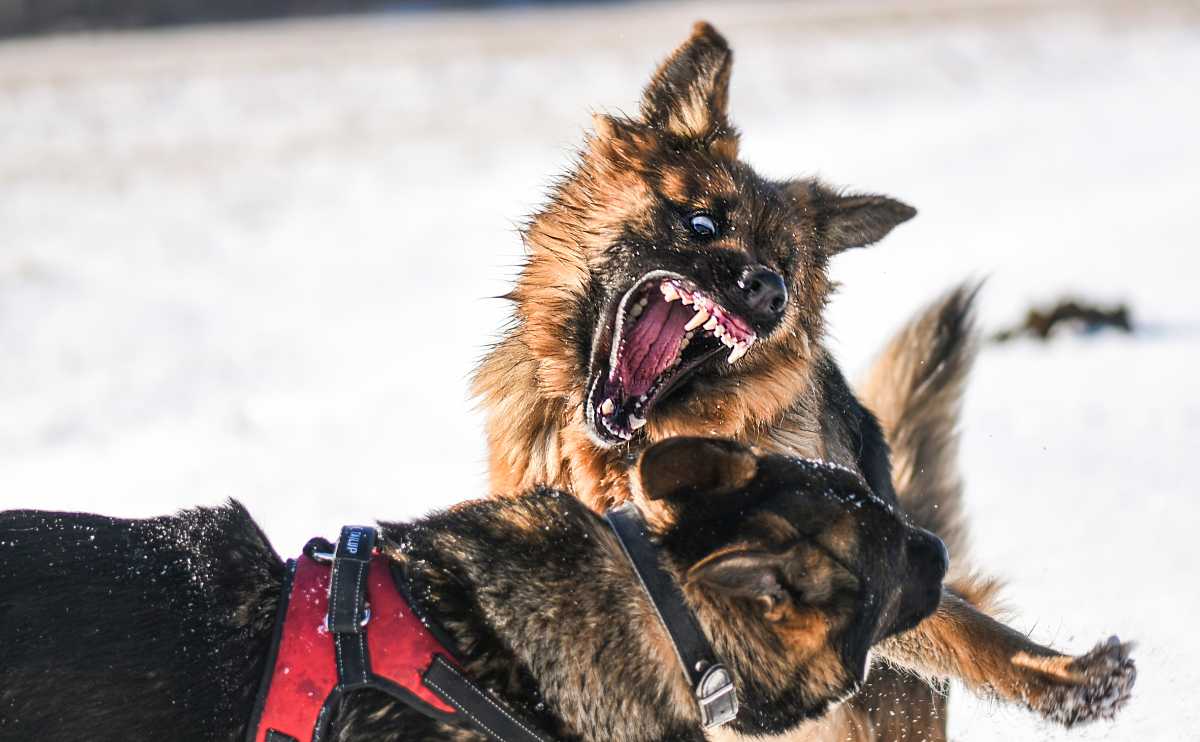When you purchase through links on our site, we may earn a commission. Here’s how it works.

It’s hard to resist a dog’s adorable exposed belly without giving it a good rub or scratch. When you do this with your pup, does she become excited, wiggly, or kick out her hind leg? We know most dogs enjoy a good belly rub, but what exactly are they feeling? Can dogs be ticklish like humans?
Are Dogs Ticklish?
Yes, dogs can be ticklish, just like people, primates, and other mammals. Humans and dogs feel two kinds of tickling sensations. One is called knismesis, which is a light, feather-like type of tickling that often feels slightly itchy or like a bug crawling on your skin. The other type of tickling is called gargalesis, which involves heavier, laugh-inducing pressure to certain ticklish spots.
Why Are We Ticklish?
The exact reason isn’t fully understood, but there are several theories. The most dominant theory is that the tickling sensation is the body’s way of defending vulnerable, sensitive areas (like the bottom of our feet). And the automatic response we have to pull away from what’s causing the tickling helps protect us.
How Do I Know If My Dog Enjoys Tickling?
Research has found that tickling stimulates both the touch and pain nerve endings in the skin. This may help explain why some people find tickling unbearable. Is the same true for some dogs? Our canine companions share our varying sensitivity and responses to tickling. Some dogs are simply more sensitive to touch than others.
Pay attention to your pup’s vocalization and body language to know if she likes being tickled. Dogs don’t laugh as we do, but some animal behaviorists believe that dogs express happy panting as the equivalent of our laughter. This happy panting often follows initial signs of an open mouth, stretching from ear to ear, with their tongue hanging out slightly to one side.
Tail-wagging is another good sign that your good girl or boy is just fine. If your furry friend doesn’t try to pull away from you, she’s likely enjoying your touch. But like humans, dogs can exhibit the same automatic reflex of twitching or pulling away when being lightly tickled (see video below).
Where Are Dogs Ticklish?
Dog tickle spots differ from one pup to another. But in general, some areas seem to be more ticklish than others. The most common tickle spots for dogs include:
- Ears
- Belly
- Sides
- Paws
- Back (near the base of the tail)
- Neck
How To Tickle A Dog
Find your pup’s tickle spots by lightly scratching or wiggling your fingers over different areas of her body. Keep it brief at first but take note of her reactions to each area. If your doggy moves away from you, that’s a certain sign that she’s not into your tickling game at the moment. You can try the same areas later to gauge whether a certain spot is always a no-go or whether your pup just needs to be in the right mood to enjoy your tickling.
Why Do Dogs Kick When You Scratch Their Belly?
Is your puppy one of many who rhythmically kick their hind leg when you scratch the sweet spot on their belly? Is this a sign of being ticklish? No, this reaction is called a scratch reflex. It’s an involuntary response that’s similar to a human’s knee-jerk reflex when a doctor taps below your knee. When you scratch your pup’s tummy, it activates nerves under your dog’s skin that send a message directly to the spinal cord.
The central nervous system then sends a message back that activates the leg muscles to scratch and kick off what the body perceives as an irritant. This doesn’t mean your furball doesn’t like having her tummy rubbed; it’s just a fascinating evolutionary means of self-protection.
Are Dogs Ticklish On Their Paws? (Video)
Next time your pup is fast asleep, try out this amusing way to find out if your pup’s paws are ticklish. Youtuber Mirca the Husky certainly seems to be!
Fun Ways To Bond With Your Dog
Tickling can be a fun way to strengthen your bond with your doggy. Giving your dog plenty of interaction and mental stimulation can alleviate boredom and anxiety, improve her behavior, and boost her self-confidence. Try playing some brain games with your pup. Introduce new toys to keep her stimulated. You may even want to get into agility training — it’s an excellent bonding experience.
Tagged With: Trivia

